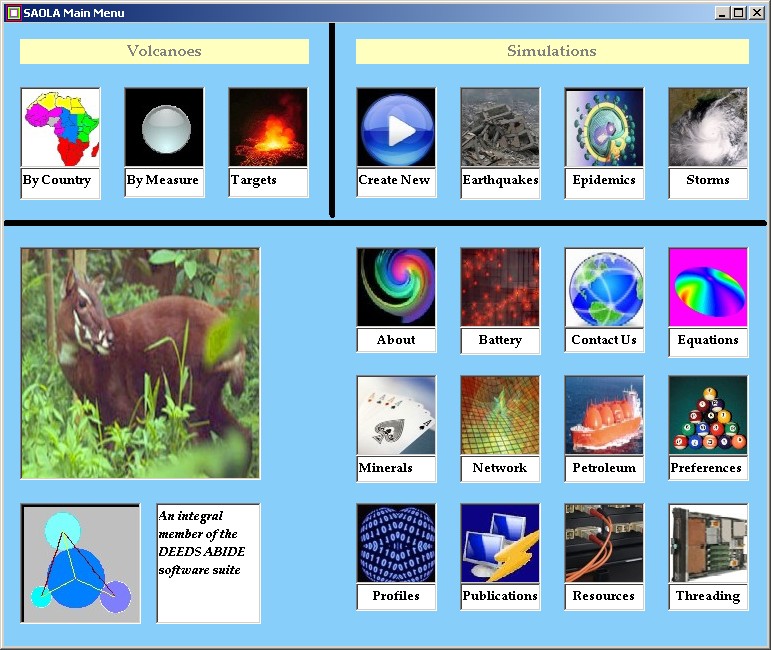The Saola (Pseudoryx nghentinhensis) was just a legend until 1992. The current known
population is limited to Nghe An and Ha Tihn provinces in Vietnam and portions of
Laos. Doubtless, it is what Japan, Russia, France, the United States, China, Vietnam and
others were been fighting over in Southeast Asia for most of the 20th century. Today,
there are a few hundred animals, no zoo breeding program and the species is critically
endangered. Still, given our penchant for naming applications after antelopes, a "new"
species should be more inspiration than naming an application after a species that has
population is limited to Nghe An and Ha Tihn provinces in Vietnam and portions of
Laos. Doubtless, it is what Japan, Russia, France, the United States, China, Vietnam and
others were been fighting over in Southeast Asia for most of the 20th century. Today,
there are a few hundred animals, no zoo breeding program and the species is critically
endangered. Still, given our penchant for naming applications after antelopes, a "new"
species should be more inspiration than naming an application after a species that has

recently gone extinct. That's true, but there is a undeniable dark tone to SAOLA that is not related to the
antelope's jungle environment or its coat color. As can be seen below, SAOLA focused on volcanoes,
earthquakes, epidemics and storms. We were interested in keeping track of the economic impact of
these events. With the exception of pandemics like AIDS and the mis-named Spanish influenza of
1915-20, most of the events are local and involve one part of a country, or perhaps areas of several
neighboring countries. Or so we thought until we came across work published in 1993 by Michael R.
Rampino of New York University and Stephen Self of the University of Hawaii at Manoa. We believe they
first suggested a link between an eruption at Toba in Indonesia and a bottleneck in human evolution.
The theory was then further developed in 1998 by Stanley H. Ambrose of the University of Illinois at
Urbana-Champaign. This page may be referenced as http://tinyurl.com/28ejeof
antelope's jungle environment or its coat color. As can be seen below, SAOLA focused on volcanoes,
earthquakes, epidemics and storms. We were interested in keeping track of the economic impact of
these events. With the exception of pandemics like AIDS and the mis-named Spanish influenza of
1915-20, most of the events are local and involve one part of a country, or perhaps areas of several
neighboring countries. Or so we thought until we came across work published in 1993 by Michael R.
Rampino of New York University and Stephen Self of the University of Hawaii at Manoa. We believe they
first suggested a link between an eruption at Toba in Indonesia and a bottleneck in human evolution.
The theory was then further developed in 1998 by Stanley H. Ambrose of the University of Illinois at
Urbana-Champaign. This page may be referenced as http://tinyurl.com/28ejeof